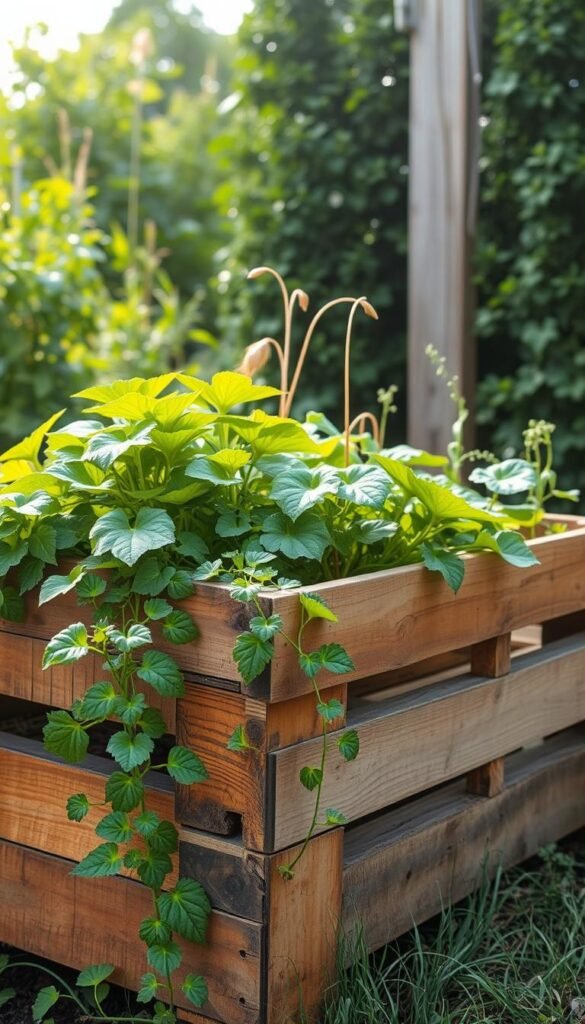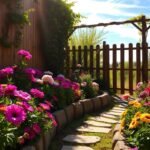Transforming everyday materials into thriving growing spaces is easier than you think. Many green-thumbed enthusiasts are discovering how shipping pallets can become the foundation for practical, eco-friendly planters. These projects let you grow herbs, veggies, or flowers while keeping costs low and reducing waste.
Why choose this approach? First, materials are often free or inexpensive if you know where to look. Local businesses or online listings frequently offer unused pallets—just ensure they’re stamped with “HT” to confirm safe heat treatment. Avoid chemically treated wood to protect your soil and plants.
You’ll love how versatile these structures can be. Whether you’re working with a small patio or a sprawling backyard, they adapt to your space. Pair them with budget-friendly gardening solutions to maximize yields without compromising style. Think vertical designs, tiered layouts, or even mobile planters!
Beyond functionality, this method supports sustainable living. Repurposing materials reduces landfill waste while creating eye-catching outdoor features. Imagine harvesting tomatoes from a structure that once carried boxes—it’s gardening with a story.
Ready to start? We’ll guide you through selecting materials, planning layouts, and avoiding common pitfalls. By the end, you’ll have a durable, productive space that reflects your commitment to both nature and creativity.
Why Choose Pallet Raised Garden Beds?
Growing your own fresh produce becomes simpler when you work with nature’s rhythms. These structures solve multiple challenges at once—they’re kind to your wallet, gentle on the planet, and easier to maintain than traditional plots.
Environmental and Budget Benefits
Reusing materials keeps useful wood out of landfills. One study shows 450 million pallets get discarded annually in the US—enough to circle the Earth twice! By repurposing just four pallets, you’ll create planting space while saving $150+ compared to store-bought kits.
| Feature | Traditional Beds | Pallet Solutions |
|---|---|---|
| Material Cost | $200+ | $0-$20 |
| Installation Time | 4-6 hours | 1-2 hours |
| Carbon Footprint | High | Negative |
Enhanced Accessibility for Urban Gardeners
City dwellers gain three key advantages. Elevated designs mean less bending—perfect for tight spaces or aging joints. You’ll also avoid contaminated ground soil by filling containers with clean mixes. Bonus: slugs and rabbits struggle to reach your kale!
Choosing the Right Materials for Your DIY Raised Bed
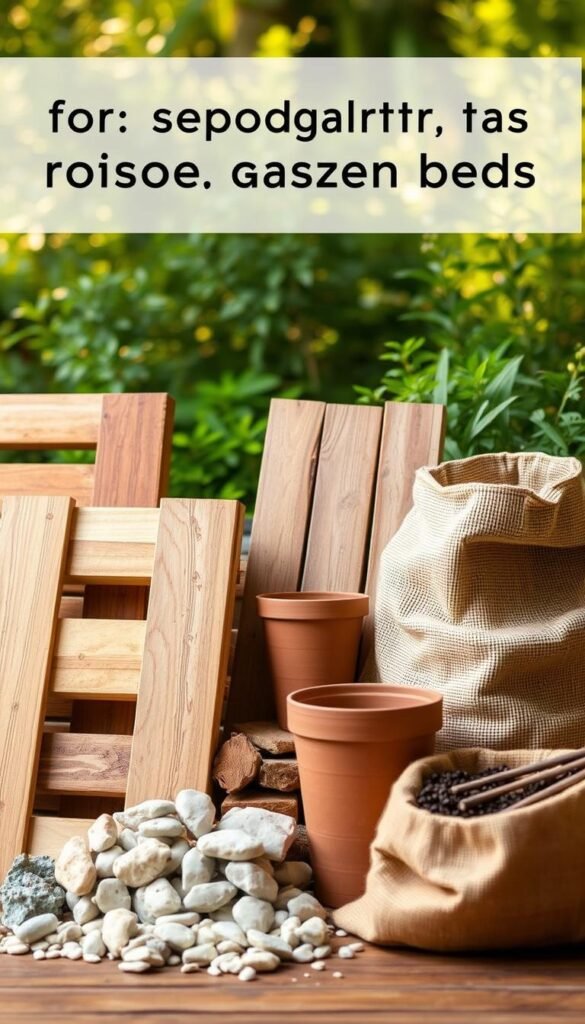
The foundation of a healthy growing space lies in what you build it with. Smart material choices protect your plants and create lasting structures that blend functionality with eco-conscious design.
Upcycled Wood and Reclaimed Alternatives
Start by hunting for heat-treated pallets marked with “HT” stamps—these undergo steam processing instead of chemical baths. Local hardware stores often give away leftover lumber, while demolition sites yield weathered planks perfect for rustic charm. Consider these options:
- Barn wood with character-rich knots and grooves
- Concrete blocks for sturdy, pest-resistant edges
- Willow branches woven into living walls
One urban gardener transformed discarded wine barrels into thriving herb circles. “Salvaged materials tell stories while feeding families,” notes Portland horticulturist Mara Lin.
Safety Tips: Avoiding Chemically Treated Materials
Steer clear of railroad ties or wood stamped “MB” (methyl bromide). These preservatives leach toxins into soil for years. Always:
- Scrub materials with vinegar-water solutions
- Check for paint chips or oil stains
- Line beds with landscape fabric as extra protection
Recycling centers often stock clean, aged timber perfect for edible projects. Remember: when in doubt about a material’s history, use it for ornamental flowers instead of veggies.
Pallet Raised Garden Bed DIY: Creative Methods for Upcycled Gardening
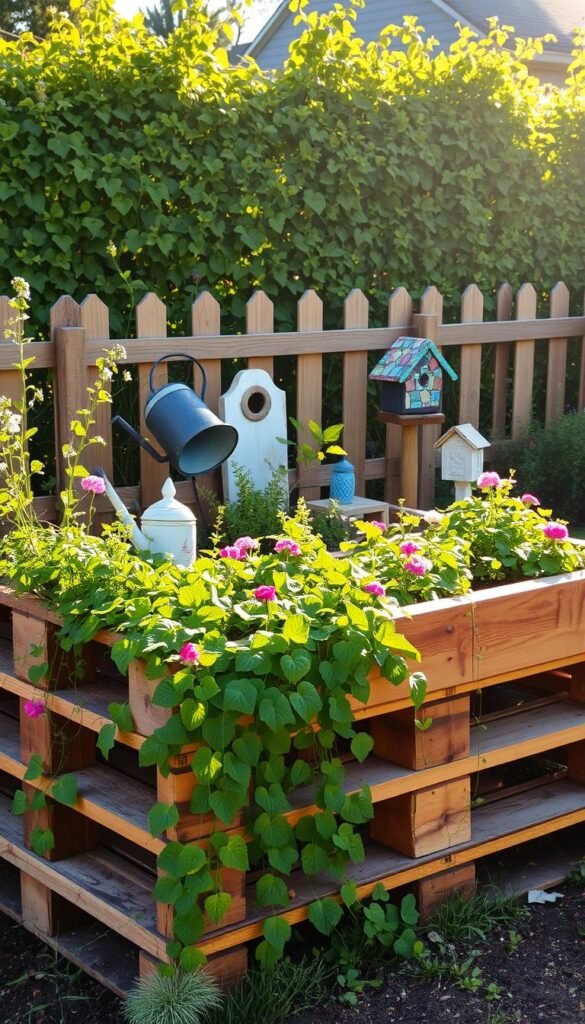
Turning shipping platforms into lush planters requires minimal effort but yields maximum rewards. With basic tools like a hammer, saw, and staple gun, you can convert wooden frames into versatile growing systems. Let’s explore two popular approaches and their unique benefits.
| Design Type | Best For | Materials Needed | Plant Suggestions |
|---|---|---|---|
| Vertical Planters | Balconies & walls | 1 pallet, landscape fabric | Strawberries, succulents |
| Box Planters | Ground installations | 2-3 pallets, wood screws | Carrots, peppers |
Vertical designs shine in tight spaces. Secure landscape fabric between slats to hold soil while allowing drainage. This setup lets you grow herbs or flowers vertically—perfect against fences or garage walls. One Texas gardener reported tripling their basil harvest using this space-saving method.
For traditional layouts, assemble box-style planters by connecting multiple units. Leave gaps between bottom slats for drainage, or line them with burlap for finer soils. These structures work wonders for root vegetables and bush beans, keeping them safe from ground pests.
Want more inspiration? Explore creative upcycled planter ideas that pair perfectly with these systems. Add wheels to mobile units for chasing sunlight, or stack pallets into tiered towers for visual drama. Your only limit? The depth of your imagination—and maybe how many free materials you can find!
Planning Your Garden Bed Layout and Location
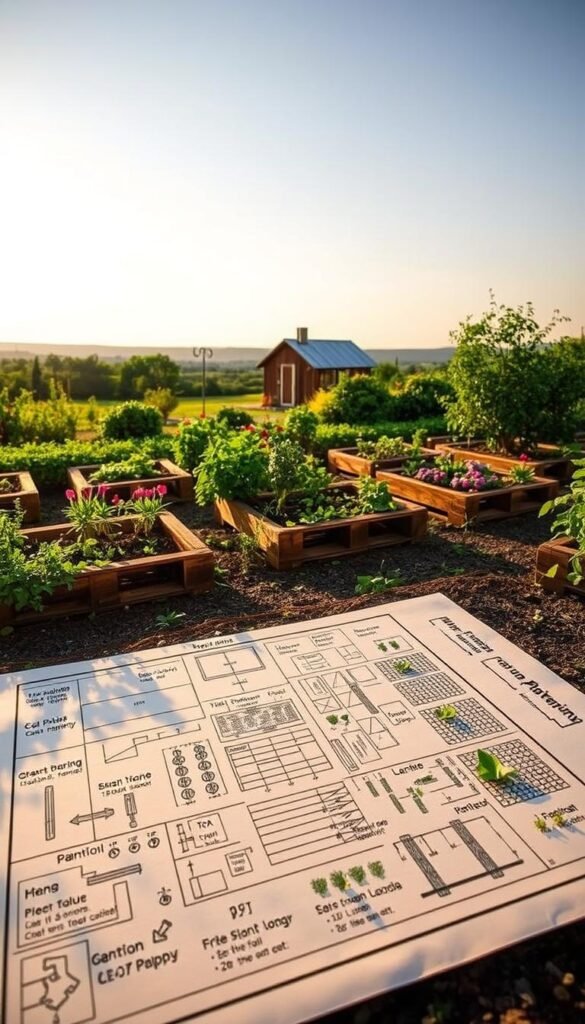
Strategic positioning transforms good growing spaces into high-performing ecosystems. Whether starting fresh or expanding existing plots, smart placement boosts yields while saving effort. Let’s explore how to align your setup with nature’s rhythms and your daily routine.
Sunlight, Drainage, and Site Conditions
Track sunlight patterns across your space for 24 hours. Full-sun crops like tomatoes demand 6-8 hours of direct light, while leafy greens tolerate dappled shade. Position structures where water drains naturally—low spots cause root rot during storms.
| Plant Type | Sunlight Needs | Soil Depth | Drainage Tips |
|---|---|---|---|
| Tomatoes | 8+ hours | 12 inches | Slope beds 2° downward |
| Lettuce | 4-6 hours | 6 inches | Add perlite to soil mix |
| Carrots | 6-8 hours | 8 inches | Install gravel base layer |
Optimal Bed Dimensions and Accessibility
Keep widths under 4 feet if accessing from both sides. This lets you reach the center without compacting soil. For single-sided access, limit to 2.5 feet. Depth varies: 8 inches suits most veggies, but go deeper for potatoes or asparagus.
Clear weeds and level the ground before installation. Save time by placing structures near hose hookups and tools. One Minnesota grower reduced watering chores by 40% using this tactic. “Easy access means I actually maintain my plot,” they noted.
Step-by-Step Guide to Building Your Raised Garden Bed
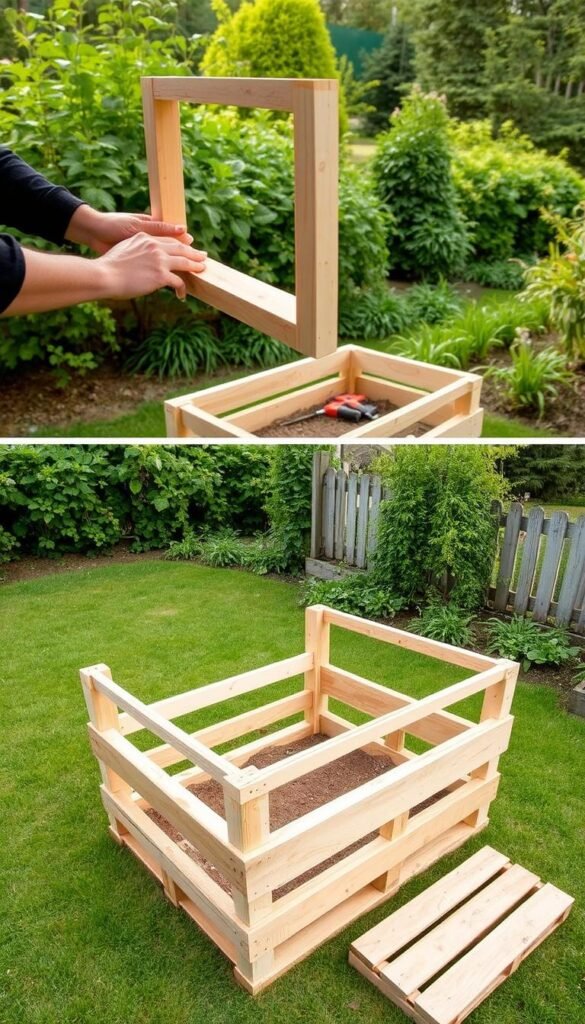
Assembling a durable structure for your plants requires careful preparation and smart techniques. Begin by gathering your tools and inspecting materials to create a stable foundation. This process transforms simple components into a thriving ecosystem right in your backyard.
Essential Tools and Preparation
Start with a drill, wood screws, measuring tape, and safety goggles. Check each board for cracks or rot—replace damaged pieces immediately. Clean surfaces with a stiff brush to remove dirt or splinters that could affect stability.
| Tool | Purpose | Pro Tip |
|---|---|---|
| Cordless Drill | Secure joints | Pre-drill holes to prevent splitting |
| Level | Ensure even base | Check diagonally for perfect alignment |
| Staple Gun | Attach liner | Overlap fabric edges by 2 inches |
Construction Techniques and Best Practices
Reinforce corners with metal brackets for extra support. Line the interior with landscape fabric, securing it tightly to prevent soil loss. Always position your structure on leveled ground—sloping surfaces cause water pooling.
| Soil Component | Ratio | Benefit |
|---|---|---|
| Compost | 30% | Nutrient boost |
| Topsoil | 50% | Structure |
| Perlite | 20% | Drainage |
For detailed measurements and assembly diagrams, follow our step-by-step tutorial. Mix soils thoroughly before filling your planter, leaving 1 inch at the top for mulch. Water gently after planting to settle roots without compaction.
Integrating Recycled and Unconventional Materials
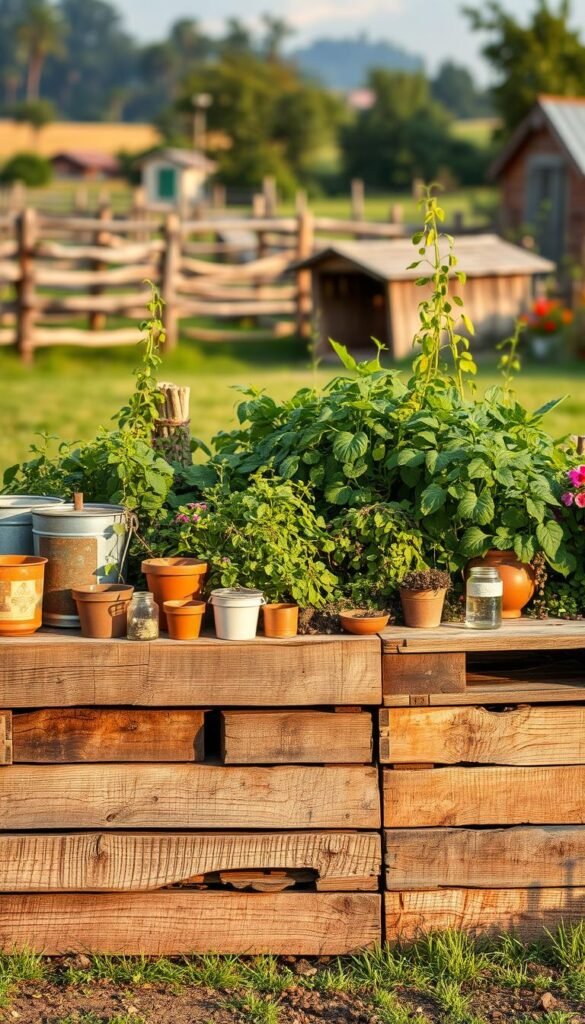
Your planting space becomes a sustainability statement when you reimagine discarded items as functional components. Beyond traditional wood structures, countless durable alternatives await discovery in salvage yards and construction sites.
Using Metal Siding, Wire, and Rock Options
Galvanized metal strips from old roofs make weather-resistant walls that outlast most wood. These industrial-chic panels reflect sunlight, keeping soil cooler in summer. Pair them with wire mesh and river rocks to build gabion beds—their open structure prevents waterlogging while adding modern flair.
Concrete blocks stack like LEGO bricks for instant raised beds. Their hollow centers become bonus planting pockets for herbs or flowers. “I grow thyme in mine—it cascades beautifully,” shares a Denver gardener who built her entire plot using reclaimed cinder blocks.
| Material | Durability | Cost | Best For |
|---|---|---|---|
| Metal Siding | 15+ years | $$ | Hot climates |
| Gabion Wire | 10+ years | $ | Sloped yards |
| Concrete Blocks | 20+ years | $ | Modular designs |
Railroad ties work well for terraced beds but require caution. Always choose untreated ones—creosote-treated versions can poison your soil. For safer options, try repurposed bathtubs or stock tanks. Their enameled surfaces resist rot, and built-in drains simplify watering.
Mix materials creatively. Line the bottom of wire beds with landscape fabric to contain soil while showcasing stone textures. Combine metal edges with wooden accents for contrast. Your garden becomes a gallery of sustainability where function meets imagination.
Creative Upcycling Ideas for Limited Spaces
Small spaces spark big creativity when you rethink ordinary objects as growing stations. Urban dwellers and balcony gardeners can cultivate fresh herbs, flowers, and veggies without sacrificing style or square footage. The secret? Look beyond traditional containers to items already gathering dust in your home.
Transforming Everyday Items into Functional Planters
Old dressers become multi-level wonders when you remove drawers and line compartments with landscape fabric. Each section hosts different plants—basil in the top, radishes below, and trailing nasturtiums at the base. “It’s like having a living pantry,” remarks a New York gardener who grows 15 varieties in a repurposed chest.
Vertical systems maximize every inch. Mount pallets on sunny walls, fill gaps with soil, and plant strawberries or succulents between slats. For mobility, try these adaptable options:
- Retired wheelbarrows: Roll them to chase sunlight
- Stock tanks: Drill drainage holes for instant beds
- Foam blocks: Carve pockets for microgreens
| Material | Space Saved | Plant Suggestions |
|---|---|---|
| Bookshelves | 75% vertical | Herbs, lettuce |
| Bath tubs | Ground footprint | Tomatoes, peppers |
| Staircases | Tiered layers | Flowers, spinach |
Combine companion planting with tiered designs to boost yields. A Boston couple grows marigolds alongside tomatoes in their staircase planter—the flowers deter pests while adding color. One way to ensure success: match container depth to root needs. Shallow bins work for greens, while deeper beds suit carrots or potatoes.
Remember, your garden reflects your personality. That chipped teapot? Perfect for thyme. Those cracked rain boots? Ideal for pansies. Every upcycled piece tells a story while feeding your family.
Adapting Your DIY Garden Bed for Urban and Homesteading Lifestyles
Your green space should grow with your life’s rhythm, not against it. In cities like Dallas, smart design turns tight corners into productive oases. Let’s explore how to tailor your setup for comfort, security, and urban practicality.
Space-Smart Solutions for Metro Living
Adjustable heights make raised garden beds accessible for all abilities. Build structures at 24-30 inches tall for seated gardeners, keeping widths under 3 feet for easy reach. Use lightweight soil mixes to reduce strain when refilling containers.
Above-ground systems bypass invasive tree roots and clay-heavy earth common in Texas. Secure planters with L-brackets to fences or walls to prevent tipping—a clever idea for windy balconies. Thyme or chives thrive in these stable microclimates.
Reclaimed materials shine here. Scaffolding planks become instant shelves for potted plants, while old bricks form decorative edges. One Dallas family transformed construction site leftovers into a thriving garden that feeds four people weekly.
Protect your harvest with simple tweaks. Embed trellises into beds to deter casual theft, or plant rosemary along edges—its strong scent masks veggies from curious critters. Your green corner becomes both sanctuary and sustenance, blending seamlessly into urban life.

